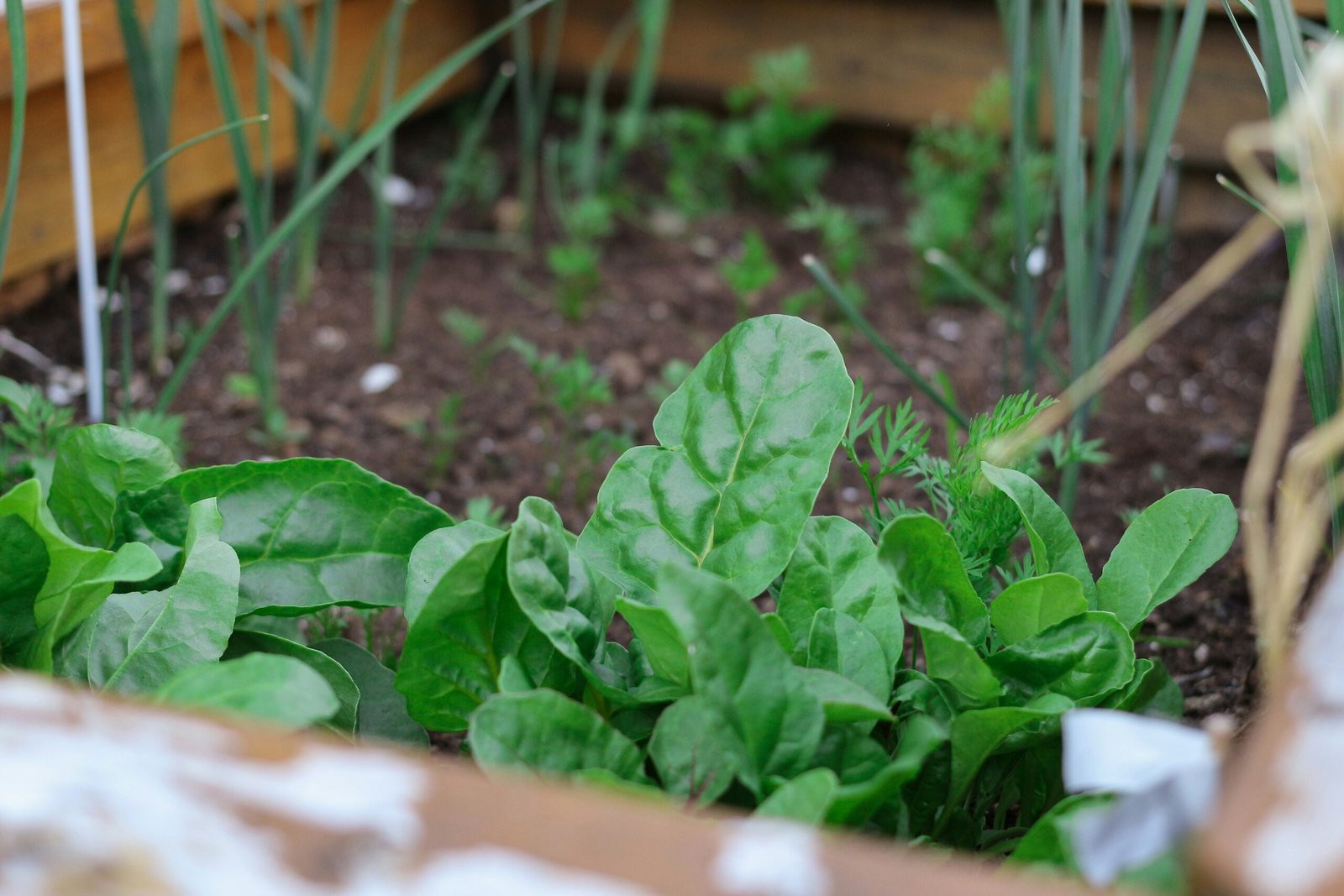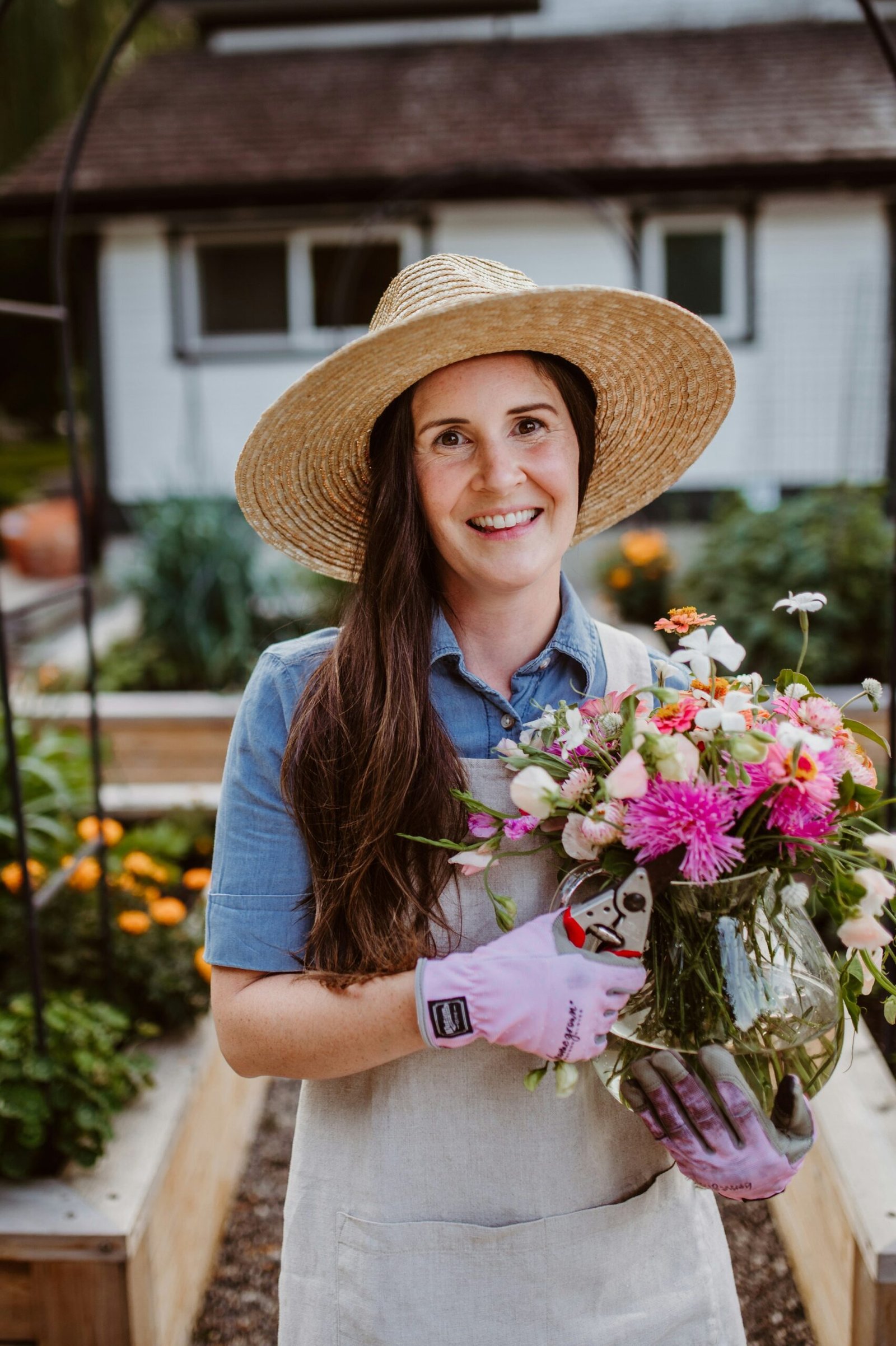Introduction to Home Gardening
Home gardening is an increasingly popular endeavor that allows individuals to cultivate their own plants, vegetables, and herbs in a convenient and personalized space. This practice not only contributes to the beauty of one’s surroundings but also offers numerous benefits that enhance daily living. One of the primary advantages of engaging in home gardening is the significant stress relief it can provide. Immersing oneself in nature and tending to plants often leads to a sense of tranquility and accomplishment, which can be especially beneficial in today’s fast-paced world.
In addition to the mental health benefits, a home garden can yield fresh produce, making it a practical choice for those looking to incorporate healthier foods into their diet. Growing your own fruits and vegetables ensures access to fresh, organic options, which can sometimes be a luxury in grocery stores. The satisfaction of harvesting a ripe tomato or crisp lettuce from one’s garden not only enhances culinary experiences but also fosters a deeper appreciation for food and nutrition.
Moreover, home gardening also serves to enhance the aesthetic appeal of living spaces. A well-maintained garden can be a vibrant focal point, providing color and fragrance that transforms an ordinary backyard or balcony into a lush oasis. This natural beauty can increase property value and significantly elevate the overall ambiance of a home.
The good news is that anyone, regardless of prior experience, can embark on the journey of home gardening. With a variety of resources available, such as books, online articles, and community workshops, novice gardeners can access vital information on how to start and maintain a garden. Whether one has a small apartment balcony or a sprawling backyard, the potential to create a flourishing home garden is within reach for everyone willing to nurture their green thumb.
Choosing the Right Location for Your Garden
Selecting the ideal location for your home garden is crucial for the success of your plants. One of the foremost considerations is sunlight exposure. Most vegetables and flowers thrive in full sun, requiring at least six to eight hours of direct sunlight daily. Evaluate your yard or balcony for areas that receive consistent sunlight throughout the day. Conversely, if you’re choosing an indoor space, identify window sills or locations that allow ample natural light. Artificial grow lights can also be utilized to supplement the lack of sunlight in your chosen spot.
Another critical factor to consider is soil quality. Different plants have varying requirements in terms of soil composition, pH level, and drainage. Before planting, it is advisable to assess the soil in your chosen location. You can conduct a soil test to determine its nutrient content and pH level. If the existing soil is not suitable, you may need to amend it with organic matter, compost, or other soil enhancements to promote a healthy growing environment. Raised garden beds or containers may also be viable alternatives if soil conditions are less than optimal.
Additionally, proximity to water sources is essential for maintaining a flourishing garden. Ensure that your chosen location is easily accessible for regular watering. Consider incorporating rain barrels or drip irrigation systems if you opt for a backyard or balcony garden, as this can help in managing water efficiently. Finally, pay attention to the environmental conditions such as wind exposure and microclimate variations within your space, as these aspects can significantly affect plant growth and development. By carefully evaluating these factors, you can establish a thriving garden that meets the specific needs of your selected plants.
Understanding Plant Types and Varieties
When embarking on home gardening, understanding the various types of plants available is crucial for creating a thriving green space. The primary categories of plants suitable for home gardens include vegetables, herbs, flowers, and succulents. Each type presents unique benefits and cultivation requirements, making it essential to consider your personal preferences, available space, and local climate when selecting varieties.
Vegetables are a popular choice for home gardens, particularly for individuals interested in growing their own food. Common options include tomatoes, peppers, lettuce, and carrots. When selecting vegetable varieties, it is essential to choose those that are well-suited to your growing zone and climate. For example, warm-season crops thrive in regions with long summers, while cool-season vegetables perform better in areas with milder temperatures.
Herbs are another rewarding choice for home gardeners. They not only enhance culinary creations but also can provide aromatic benefits to the garden. Popular herbs such as basil, parsley, and cilantro are relatively easy to grow, even in limited spaces. When selecting herb varieties, consider seasonal availability and local growing conditions, as some herbs may prefer specific environments, such as sunny locations or partial shade.
Flowers add beauty and color to a home garden, helping to attract pollinators and beneficial insects. Varieties can range from perennials, which return each year, to annuals, which need to be replanted annually. Native flowers can be particularly advantageous, as they are adapted to local conditions and typically require less maintenance.
Lastly, succulents have gained popularity for their low water requirements and unique aesthetic appeal. These drought-resistant plants, which include varieties like aloe and jade plant, thrive in well-drained soil and ample sunlight. They can be an excellent choice for urban gardeners or those with limited gardening experience.
Ultimately, understanding plant types and their specific needs will help you create a successful and enjoyable home garden, tailored to your individual circumstances.
Soil Preparation and Fertilization
Preparing the soil is a critical step in establishing a successful home garden. It begins with testing the soil pH, which determines the acidity or alkalinity of the soil. Most garden plants prefer a pH range between 6.0 and 7.0, where essential nutrients are most available. Home gardeners can utilize simple pH test kits available at garden centers or local extension services. Depending on the results, it may be necessary to amend the soil. For instance, if the soil is too acidic, adding lime can help raise the pH, while sulfur can be used to lower it.
After testing, amending the soil with compost is highly beneficial. Compost not only enriches the soil with organic matter, which is essential for plant growth, but it also improves soil structure, enhancing its ability to retain moisture and nutrients. Incorporating well-rotted manure or specialized organic fertilizers can further optimize the growing conditions. Mixing these amendments into the top few inches of soil ensures that the roots have direct access to vital nutrients.
Another important factor in soil preparation is ensuring proper drainage. Poor drainage can lead to waterlogged soil, resulting in root rot and other plant diseases. To improve drainage, gardeners might consider raised beds or incorporating materials such as perlite, vermiculite, or sand into heavy clay soils. This adaptation can facilitate proper water management and create a healthy environment for plant roots to thrive.
Once the soil has been properly prepared, choosing the right fertilizers becomes paramount. There are several types of fertilizers available, including granular, liquid, and slow-release formulas. Gardeners should select a fertilizer that is compatible with the specific needs of the plants they intend to grow, as well as their soil composition. Following label instructions regarding application rates and timing is crucial for achieving optimal plant growth while avoiding nutrient runoff into the environment.
Planting Techniques and Spacing
Successfully growing plants in your home garden begins with understanding various planting techniques, which greatly influence plant health and productivity. Direct sowing and transplanting seedlings are among the most common methods employed by gardeners. Direct sowing involves planting seeds directly into the soil. This technique is often recommended for crops that prefer the outdoors and are adapted to the climate in your area. It allows the seeds to germinate in their final growing location, which can result in stronger plants that are better acclimatized to their environment.
On the other hand, transplanting seedlings is particularly useful for crops that require a longer growing period or need to be started indoors before being moved outdoors. By starting seeds in containers, gardeners can protect young plants from adverse weather conditions and pests, ensuring a higher survival rate when they are eventually planted in the garden. Whichever technique is chosen, the timing of planting is crucial, as different plants have unique requirements regarding temperature and light.
Equally important as the planting technique is the proper spacing of plants, which directly impacts their growth. Adequate space allows for optimal air circulation, reducing the risk of fungal diseases and promoting healthy growth. Crowded plants compete for nutrients, water, and light; proper spacing minimizes competition and encourages robust plant development. Each species has specific spacing recommendations, often found on seed packets or gardening resources, and adhering to these guidelines can significantly enhance garden yield. Gardeners should carefully evaluate their plant selection to ensure they are adhering to spacing requirements suitable for each plant at maturity.
Ultimately, understanding the principles of planting techniques and spacing is foundational in cultivating a thriving home garden. These practices not only foster healthy plant development but also contribute to an aesthetically pleasing and functional gardening space.
Watering Guidelines for Plant Health
Watering is a crucial aspect of maintaining plant health in any home garden. The frequency and method of watering can significantly impact growth and vitality. The primary factors influencing watering frequency include the type of plant, soil composition, and environmental conditions such as humidity and temperature. For instance, plants with deep root systems often require less frequent but deeper watering compared to those with shallow roots, which may need regular, lighter applications.
Deep watering encourages roots to grow deeper into the soil, enhancing their access to nutrients and moisture. This method also promotes healthier, more resilient plants able to withstand drought conditions. When watering, it is essential to ensure that water reaches the root zone without saturating the soil, as waterlogged conditions can lead to root rot and other diseases.
The signs of over-watering and under-watering must be closely monitored. Over-watering often manifests through yellowing leaves, wilting, and a general lack of growth despite sufficient light. Conversely, under-watering may cause leaves to become crispy, browning at the edges, and persistent drooping. Regularly checking the soil moisture by inserting a finger or a moisture meter can provide valuable insights on when to water.
Drip irrigation is a highly effective method for home gardeners seeking to optimize water usage. This system delivers water directly to the plant’s roots, minimizing evaporation and runoff. Implementing a drip irrigation setup can ensure a consistent moisture level while conserving water resources. Whether using a soaker hose or a more complex system, maintaining an appropriate watering routine is vital for the long-term health of your garden’s flora.
Pest Control and Plant Diseases
Maintaining a thriving home garden requires vigilance against common pests and plant diseases that can adversely affect growth and yield. Garden pests such as aphids, slugs, and spider mites are notorious for inflicting damage on a variety of plants. Recognizing the signs of infestation is crucial; for instance, aphids often produce a sticky substance known as honeydew, while spider mites may leave fine webs on leaves. Early detection is key to effectively managing these issues.
When dealing with pests, gardeners can choose between natural and chemical control methods. Natural solutions include introducing beneficial insects like ladybugs, which prey on aphids, or using plant-derived insecticides that target specific pests without harming beneficial organisms. Another organic strategy is the application of neem oil, which disrupts the life cycle of pests and acts as a fungicide against certain diseases. Chemical pesticides, while effective, require careful application and consideration of their potential impact on the environment and helpful insects.
Plant diseases can also severely hinder the health of your garden. Fungal infections, such as powdery mildew and root rot, often stem from excessive moisture or poor air circulation. Integrated pest management (IPM) strategies involve implementing proper watering schedules, spacing plants appropriately, and utilizing resistant plant varieties when available. Additionally, crop rotation can help prevent recurring diseases by disrupting their life cycles.
Preventive measures should be a gardener’s first line of defense. Regularly inspecting plants, maintaining cleanliness in the garden area, and practicing good watering techniques will contribute to minimizing both pests and diseases. By understanding the common threats to home gardens and employing effective control and prevention strategies, gardeners can cultivate healthier plants and enjoy a more bountiful harvest.
Harvesting Your Plants
Harvesting is a critical phase in the life cycle of your home garden. It is essential to determine the right time to harvest your plants to ensure optimal flavor and nutrition. Different plants have distinct signs that indicate they are ready for harvesting. For instance, leafy greens like lettuce and spinach can be harvested when they reach a suitable size, typically about 4 to 6 inches tall. On the other hand, root vegetables such as carrots and radishes should be checked for size, generally when they are about the diameter of a pencil.
When it comes to fruits, timing is equally important. Tomatoes, for example, should be picked when they are fully colored and slightly firm to the touch. Onions, however, should be harvested when the tops begin to yellow and fall over. It is advisable to use clean, sharp tools such as scissors or pruners to avoid damaging the plants during the harvesting process. This is particularly crucial for delicate plants, where rough handling could compromise their integrity.
Post-harvest care is vital for maintaining the health and quality of your plants. Immediately after harvesting, ensure that the plants are stored in a cool, shaded area to prevent wilting. Removing any damaged or diseased parts during this process will also bolster overall plant health. For leafy greens and herbs, placing them in water or wrapping them in a damp paper towel can significantly extend their freshness. For fruits and vegetables, proper storage methods, such as using breathable containers or bags, can help preserve their quality and mitigate spoilage.
Understanding when and how to harvest, as well as adopting suitable post-harvest practices, will significantly enhance the success of your home garden. Proper preservation techniques not only keep your harvest fresh but also enable you to enjoy the fruits of your labor for an extended period.
Resources and Community Support for Gardeners
As you embark on your journey of growing plants in your home garden, access to valuable resources and community support can significantly enhance your gardening experience. Numerous books, online courses, and forums are available to help you expand your knowledge, tackle challenges, and connect with fellow gardeners. Engaging with the right materials and communities can foster a deeper understanding of gardening practices and inspire you to try new techniques.
Books remain one of the most reliable sources of information. Consider exploring titles such as “The Garden Primer” by Barbara Damrosch or “All New Square Foot Gardening” by Mel Bartholomew. These publications offer comprehensive insights into various gardening methods, plant care, and landscaping advice. Additionally, many gardening professionals and enthusiasts have written focused guides that cover specific areas, such as organic gardening, pest management, or native planting, allowing you to delve into the topics that piqued your interest.
Online courses have become increasingly popular, providing flexible learning environments for aspiring gardeners. Platforms such as Coursera, Udemy, and MasterClass offer a variety of courses covering everything from basic gardening skills to advanced horticultural techniques. These courses often feature instructional videos, reading materials, and interactive assignments, allowing you to learn at your own pace and deepen your understanding of the plant-growing process.
Finally, connecting with gardening communities can be truly rewarding. Local gardening clubs, community gardens, and online forums such as Reddit’s gardening subreddit present opportunities to meet like-minded individuals, share experiences, seek advice, and ask questions. Engaging with other gardeners not only fosters camaraderie but also promotes knowledge exchange, empowering both seasoned and inexperienced gardeners to thrive.
In conclusion, leveraging these resources and community support systems will not only enrich your gardening skills but also cultivate lasting connections with others who share your passion for plants. Utilize these tools, and you will undoubtedly experience growth in both your garden and your gardening journey.




